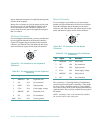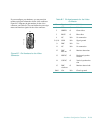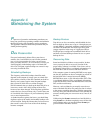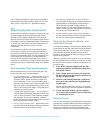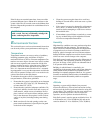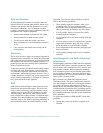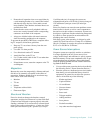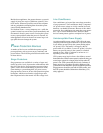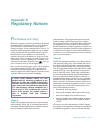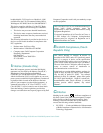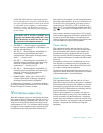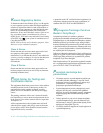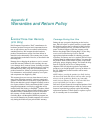
C-136 Dell PowerEdge 2100/180 and 2100/200 Systems User’s Guide
Besides these appliances, the greatest threat to a system’s
supply of power are surges or blackouts caused by elec-
trical storms. Whenever possible, turn off the computer
and any peripherals and unplug them from their power
sources during thunderstorms.
If a blackout occurs—even a temporary one—while the
system is turned on, turn off the system immediately and
disconnect it from its power source. Leaving the system
on may cause problems when the power is restored; all
other appliances left on in the area can create large volt-
age spikes that can damage the system.
Power Protection Devices
A number of devices are available that protect against
power problems, such as power surges, transients, and
power failures. The following subsections describe some
of these devices.
Surge Protectors
Surge protectors are available in a variety of types and
usually provide a level of protection commensurate with
the cost of the device. Surge protectors prevent voltage
spikes, such as those caused during an electrical storm,
from entering a system through the AC power source.
Surge protectors, however, do not offer protection against
brownouts, which occur when the voltage drops more
than 20 percent below the normal AC line voltage level.
Line Conditioners
Line conditioners go beyond the overvoltage protection
of surge protectors. Line conditioners keep a computer’s
AC power source voltage at a fairly constant level and,
therefore, can handle brownouts. Because of this added
protection, line conditioners cost more than surge protec-
tors—up to several hundred dollars. However, these
devices cannot protect against a complete loss of power.
Uninterruptible Power Supply
An uninterruptible power supply (UPS) offers the most
complete protection against variations in power because
it uses battery power to keep the system running when
AC power is lost. The battery is charged by the AC
power while it is available, so once AC power is lost, the
battery can provide power to the system for a limited
amount of time—from 15 minutes to an hour or so—
depending on the UPS system.
UPS systems range in price from a few dollars to several
thousand dollars, with the more expensive units allowing you
to run larger systems for a longer period of time when AC
power is lost. UPS systems that provide only 5 minutes of
battery power let you conduct an orderly shutdown of the
system, but are not intended to provide continued operation.
Surge protectors should be used with all UPS systems, and
the UPS system should be Underwriters Laboratory (UL)
safety approved.



